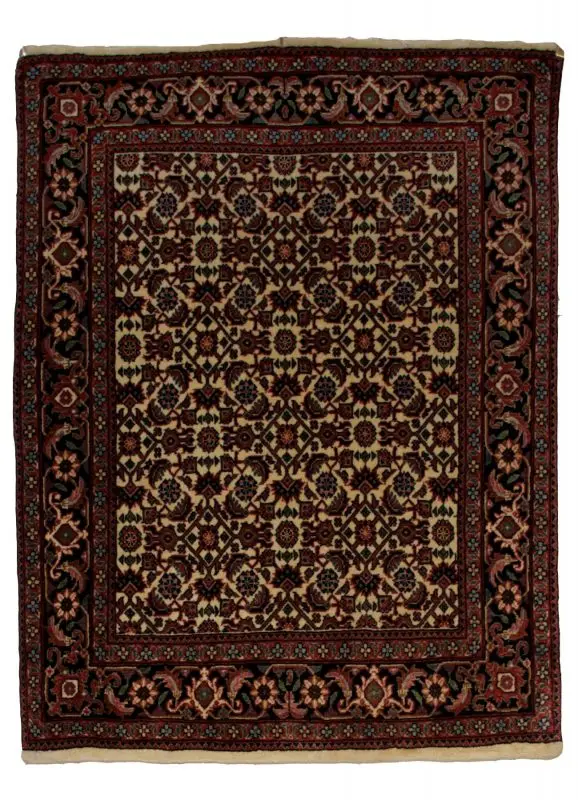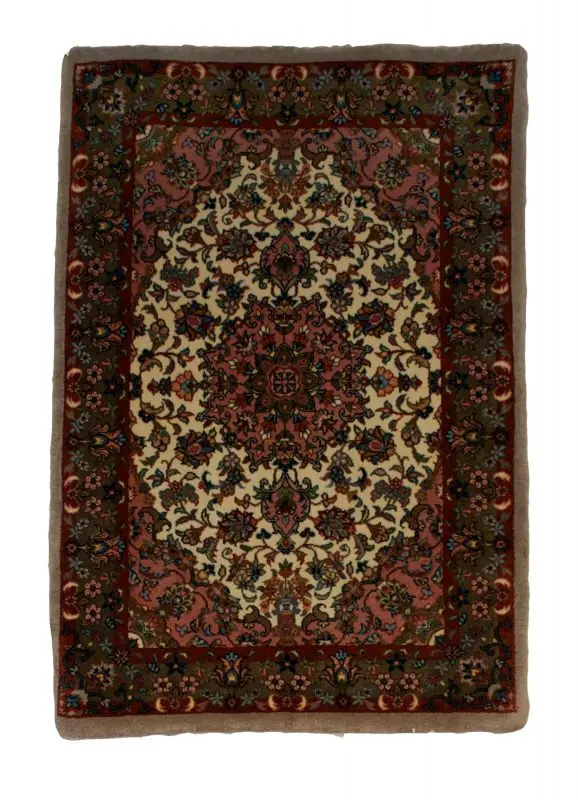Persian rugs are well-renowned worldwide for their intricate designs, rich colors, and exceptional craftsmanship. Originating from Iran, these rugs are hand-knotted by skilled artisans who dedicate months, sometimes even years, to weaving each exquisite piece. However, the market today is filled with fakes—commercial replicas that, while aesthetically appealing, lack the authenticity and quality of a real Persian rug. In this blog post, we will guide you through the process of determining the authenticity of a Persian rug.
Understanding the Basics
Real Persian rugs are hand-knotted, made from natural fibers like wool or silk, and feature unique designs reflective of the region or tribe where they were made. Each rug is a work of art, with the complexity and density of its knotting being a key indicator of its authenticity and value.
The Flip Side
One of the first steps to identifying a real Persian rug is to look at its underside. Authentic Persian rugs have a soft and plush underside, showing the same intricate design as on the front. This is because they are hand-knotted. If the underside is hard, covered with a piece of fabric, or shows a different design, it is likely machine-made.
The Material
Real Persian rugs are made from high-quality wool, silk, or a combination of the two. Synthetic fibers like nylon or polyester are a red flag. Also, the wool in Persian rugs often comes from the weaver’s sheep, giving it a more organic and luxurious feel.
Knot Count
An authentic Persian rug will have a high knot count, often exceeding 120 knots per square inch. The high knot count results from the manual labor put into weaving the rug. A lower knot count suggests a machine-made rug.

Fringe
In authentic Persian rugs, the fringe is a part of the rug itself, created during the weaving process. It’s not sewn on separately like in many counterfeit rugs. Examine the fringe closely—if it appears to be attached or glued to the ends of the rug, this suggests the rug is not genuine.
Price
Authentic Persian rugs are a product of labor-intensive craftsmanship, which is reflected in their price. If a rug’s price seems too good to be true, it probably is.
Color Run
Genuine Persian rugs are dyed using natural ingredients like plants and insects. This kind of dye doesn’t run when wet. If you’re unsure, dampen a white cloth and rub it gently on the rug. If the color bleeds onto the cloth, the rug is likely a replica.
Remember, the art of identifying real Persian rugs is a skill that takes time to learn. When in doubt, always seek professional advice. Owning a real Persian rug is not just about having a piece of home décor; it’s about being a part of a rich and enduring history. Don’t let the fakes fool you!
Note: Always consult a professional or trusted rug dealer when purchasing a Persian rug. This guide is a general rule of thumb and there may be exceptions.
the rug is likely a replica.
Remember, the art of identifying real Persian rugs is a skill that takes time to learn. When in doubt, always seek professional advice. Owning a real Persian rug is not just about having a piece of home décor; it’s about being a part of a rich and enduring history. Don’t let the fakes fool you!
In addition to the factors mentioned, there are other ways to tell if a Persian rug is real. For example, an authentic Persian rug will have some slight imperfections in its design, as it is handcrafted and not mass-produced like fake rugs. The back of the rug should also have a label with information about where it was made and by whom.
Another important aspect to consider is the color palette of the rug. Real Persian rugs have a harmonious and balanced color scheme, with natural dyes creating subtle variations in shade. Fake rugs often have bold and bright colors that are not found in traditional Persian designs.
Furthermore, real Persian rugs will age gracefully, with the colors becoming more muted over time due to exposure to sunlight and wear. On the other hand, fake rugs will not show any signs of aging and may even have a plastic-like sheen to them.
In conclusion, identifying a real Persian rug requires attention to detail, knowledge of the craft, and an appreciation for its history. By understanding the basics and knowing what to look for, you can ensure that your Persian rug is a genuine piece of art that will add beauty and value to your home for generations to come. So next time you’re shopping for a Persian rug, keep these tips in mind, and don’t be fooled by imposters! Some other ways to identify a real Persian rug include checking the rug’s foundation – if it is made of cotton, jute, or wool, then it is most likely authentic.

